Q
How many seats does a Toyota Yaris have?
According to Toyota's official specs, the Toyota Yaris currently on sale in Malaysia comes standard as a 5-seater, with a 2+3 seating layout – two up front and three in the back, which covers most families' daily travel needs. What's worth pointing out is that as a popular B-segment hatchback, the Yaris really nails space utilization with its seats. The rear seats fold down in a 60:40 split, expanding the boot volume to a maximum of 948 liters – perfect for hauling longer items when you need to. Malaysian buyers should note there might be minor differences between model years and variants; for example, some overseas markets have seen 4-seater sporty versions, but all locally available models stick with the 5-seat setup. The Yaris has built up a solid fanbase among Malaysian city commuters thanks to its flexible space and reliable reputation. Its compact size makes it a breeze on those tight local roads, yet it still manages to offer a decent level of comfort – that's part of why it continues to sell so well across Southeast Asia.
Special Disclaimer: This content is published by users and does not represent the views or position of PCauto.
Related Q&A
Q
What kind of engine is in the Toyota Yaris 2023?
Toyota's 2023 Yaris hits Malaysian roads with two engine choices to suit different drivers. There's the tried-and-tested 1.5L four-cylinder naturally aspirated unit (codename 1NZ-FE), paired with a conventional 4-speed automatic transmission. Then you've got the more advanced 1.5L three-cylinder Dynamic Force engine (M15A-FKS), which comes mated to Toyota's snappy Direct Shift-CVT for a nice blend of pep and fuel efficiency.
What really stands out about the Dynamic Force mill is Toyota's latest tech: it uses D-4S dual-injection and a high compression ratio to push out 106 hp and 140 Nm of torque. More importantly, it's tuned for better combustion efficiency, meaning it sips less fuel – perfect for Malaysia's stop-start city traffic. If you like a bit more fun behind the wheel, the 1.5L three-cylinder variant even throws in a Sport driving mode. On the flip side, the naturally aspirated four-cylinder wins points for being easy on maintenance costs.
Both engines play by Malaysia's emission rules and stay true to Toyota's reputation for bulletproof reliability. So, local buyers basically have two solid paths: go for the three-cylinder if you want the latest tech, or stick with the four-cylinder if you value tried-and-true simplicity. Your call depends on your budget and what you prioritize most.
Q
What is the eco mode on a Toyota Yaris 2024?
The 2024 Toyota Yaris' ECO mode is a fuel-saving driving aid that cuts down on gas use by tweaking engine output and transmission shift patterns. It's perfect for Malaysia's stop-and-go city traffic. Flip it on, and a green ECO light pops up on the dashboard to let you know you're in efficiency mode. The AC system also dials itself back to a more economical setting automatically. Sure, it takes a tiny bit of edge off the throttle response, but the payoff is better fuel economy – we're talking about saving roughly 10-15% on gas over time.
One thing to keep in mind: when you need to make a quick overtake or climb a steep hill, just switch ECO mode off for that instant power kick. Now, other car brands do have similar fuel-saving tech, but each one tunes it a little differently. Toyota's ECO mode here is specially optimized for Southeast Asia's hot and tropical weather, striking a good balance between AC performance and saving fuel. It's a nice touch that shows Toyota really thinks about the specific needs of different regions.
Q
What is the update for the Toyota Yaris in 2024?
The 2024 Toyota Yaris has landed in Malaysia with a bunch of upgrades, focusing mainly on sprucing up its looks, tech features, and powertrain. The new Yaris rocks sharper LED headlamps and a redesigned front bumper, giving it a sportier overall stance. Inside, there's a larger touchscreen that now supports wireless Apple CarPlay and Android Auto, making the whole connectivity experience way smoother. Under the hood, it sticks with the tried-and-tested 1.5-liter Dual VVT-i engine paired with a CVT gearbox, but with some tweaks to boost fuel efficiency—perfect for Malaysia's city driving. Safety-wise, every trim gets the Toyota Safety Sense suite as standard, packing handy features like pre-collision system and lane departure alert.
It's worth noting that the Southeast Asian market Yaris isn't the same as the European version. Toyota's tweaked the suspension setup and equipment packages to suit local road conditions and what Malaysian buyers actually want. That's pretty standard for global automakers, right? They tailor stuff to different markets to better meet local needs. For Malaysian shoppers eyeing a small hatchback, the Yaris' solid reputation for reliability and Toyota's strong after-sales network are still big draws. And with these 2024 updates, it just got even more competitive in the segment.
Q
How many cylinders are in the 2024 Toyota Yaris?
The 2024 Toyota Yaris hits the Malaysian market with two powertrain options. The 1.5-liter naturally aspirated engine features a 4-cylinder (inline-four) setup, while the 1.5-liter hybrid variant pairs a 3-cylinder engine with an electric motor. This compact hatchback stays true to Toyota's reputation for affordability and practicality. The four-cylinder version caters to those who value smoothness and dependability, whereas the three-cylinder hybrid is better suited for fuel-efficiency seekers.
In Malaysia, the Yaris has struck a chord with young drivers and small families, thanks to its nimble handling and Toyota's extensive after-sales service network. It's worth highlighting that the three-cylinder engine has effectively mitigated the traditional issue of significant vibrations through technologies like a balance shaft. Additionally, the hybrid system delivers impressive fuel savings, which is a big plus given Malaysia's relatively high fuel prices.
No matter which powertrain you choose, the 2024 Yaris comes standard with Toyota Safety Sense, Toyota's active safety suite that includes pre-collision warning and lane-keeping assist. This gives it a competitive edge in its segment.
Q
How to open gas tank Toyota Yaris 2024?
Popping open the fuel cap on the 2024 Toyota Yaris is a breeze. When the car's unlocked, just give the right side of the fuel door (located on the rear right flank of the vehicle) a light push, and it'll spring open. No extra steps or fiddling with interior levers – it's one of those handy little refinements Toyota's been rolling out lately to make life easier.
Now, here's the thing to watch for: some Malaysian-market versions might come with a locking fuel cap. If a gentle press doesn't do the trick, head over to the driver's seat, check the left-side control panel for a fuel door release switch (it's got the gas pump icon), and give that a try. You'll usually find this setup on the higher-spec trims. If you're ever stuck the first time, it's always a good idea to flip through the owner's manual – specs can vary a bit from one market to another.
For other Toyota models like the Vios or Corolla, the fuel cap operation is pretty similar, though some older models might still stick with the traditional interior pull lever.
And hey, living in Malaysia with its hot and rainy weather can take a toll on rubber seals over time. It's worth making a habit of checking that fuel cap seal every now and then to keep rainwater and dust from getting into the fuel system. If you notice the cap isn't closing properly or starts making weird noises, swing by an authorized service center. It's usually a quick fix and won't cost you an arm and a leg.
Q
How many seats are in the Toyota Yaris 2024?
The 2024 Toyota Yaris hits Malaysian roads as a practical 5-seater, sticking with the tried-and-true 2+3 seating layout that's perfect for everyday family duty. The seats themselves are designed to balance comfort with space efficiency, making this little hatch a solid pick for city commutes and small families alike.
What's worth noting is that as a key player in Toyota's global lineup, the 2024 Yaris offers Malaysian buyers a choice between a 1.5L petrol engine and a hybrid powertrain. Clocking in at around 4 meters long, it's firmly in the B-segment hatchback category. Now, rear legroom is on the snug side, but Toyota has tweaked the seatback angle and cushion design to make the back seats more livable.
Rivals like the Honda Jazz and Mazda 2 also offer 5 seats, but the Yaris fights back with the inherent advantages of the TNGA platform – think a lower center of gravity and sharper, more agile handling. Plus, the 2024 update brings some nice touches for rear passengers, including added USB ports and storage cubbies, which are always handy.
If you're a Malaysian buyer needing more seats, Toyota's got you covered with options like the 7-seater Rush or the 8-seater Innova MPV. But for many, the Yaris' fuel-sipping nature and compact dimensions that make parking a breeze keep it a top choice in traffic-congested cities like Kuala Lumpur.
Q
How to set cruise control on Toyota Yaris 2024?
Setting the cruise control in the 2024 Toyota Yaris is a breeze. First, make sure you're rolling at over 40km/h, then hit the "CRUISE" main switch on the right side of the steering wheel – you'll see a white cruise indicator pop up on the dash. Next, accelerate to your desired speed, say 110km/h like you'd typically use on the highway, and flick the "SET-" lever down to lock it in. The light turns green when it's active and good to go. Need a little speed adjustment? Use the "+" or "-" lever to nudge it up or down in 1.6km/h increments. Tap the brakes or hit "CANCEL" to pause it temporarily, but you'll need to press the main "CRUISE" switch again to shut it off completely.
A quick heads-up for Malaysian drivers: it's smarter to stick to manual driving in rainy or foggy conditions, or on KL's busy roads. Remember, this is basic cruise control – it won't automatically detect obstacles ahead, so no full-speed adaptive magic here. The Honda City and Nissan Almera in the same class offer similar features, though their controls are laid out a bit differently, so it's worth flipping through the owner's manual to get the details right. And don't skip regular brake checks – they're key for safe cruise use. That said, on long hauls up and down the North-South Expressway, this feature really helps take the edge off driver fatigue.
Q
What is the hold button on a Toyota Yaris 2024?
The "Hold" button on the 2024 Toyota Yaris is a handy driving assist feature, especially useful for Malaysia's hilly terrain and stop-start traffic. When you've come to a complete halt – say, at a red light or in a traffic jam – a quick press of this button lets you take your foot off the brake pedal. The car's electronic system then takes over, automatically holding the brakes to prevent any rolling, and only releases when you hit the accelerator again. It's a real leg-saver, trust me, especially during those long waits.
You'll typically find this kind of feature on cars with electronic parking brakes. How does it work? Basically, the electronic control unit steps in to do the job that a traditional handbrake would. Now, important to note: this isn't the same as Hill-Start Assist Control (HAC). HAC is that brief helper when you're pulling away on a slope, stopping you from rolling back. The "Hold" function, on the other hand, actively keeps the car stationary once you've stopped.
This little gem really shines during those scorching Malaysian afternoons when you're stuck at a long traffic light. My advice? Familiarize yourself with where the button is, and give the owner's manual a quick read to get the lowdown on exactly how it operates. Different car brands might call it something else, but the core idea is pretty much the same.
Q
How to change Toyota Yaris to kmh 2024?
To switch the instrument cluster display units on the 2024 Toyota Yaris from mph (miles per hour) to km/h (kilometers per hour), you'll typically use the settings buttons on the dashboard or the vehicle information display. The exact steps might vary slightly depending on the trim level and configuration. First, start the vehicle, then look for the "DISP" or "SET" button – it's usually on the left side of the steering wheel or near the instrument cluster. Press that to enter the settings menu, navigate to the "Units" option, and select "km/h" to finalize the change.
If you run into trouble, don't guess – check your owner's manual or swing by a Toyota authorized service center. They'll get you sorted quickly. In Malaysia, km/h is the standard speed unit, same as most Commonwealth countries. Getting this setting right isn't just about convenience; it helps you stay within speed limits and avoids any mix-up-related tickets.
The Yaris has always been known for its user-friendly, straightforward controls, but let's be real – even small details can differ between model years and specs. Taking a few minutes to familiarize yourself with your specific Yaris's setup? Totally worth it for smooth, stress-free driving.
Q
How to open Yaris 2024 trunk?
There are several simple ways to open the trunk of the 2024 Toyota Yaris. The most direct way is to use the trunk release button on your remote key fob. Just press and hold it for about a second, and it will unlock automatically. There is usually a trunk release lever on the driver’s side door panel inside the car, which is very convenient for quick access when you’re parked. If you’ve got a higher - spec model with the smart induction feature, you can simply approach the trunk with your key in your pocket or bag and press the button on the tailgate to unlock it. It is worth noting in terms of safety that the 2024 Yaris has an effective security upgrade that ensures the trunk can only be opened when the vehicle is unlocked, which helps keep your valuables safe from theft. For our Malaysian friends, the hot and humid weather here can sometimes affect the sensitivity of electronic components. So, it’s a good idea to check your key fob battery regularly and keep the trunk’s mechanical lock hole lubricated. These simple maintenance tips can greatly extend the service life of the relevant components. If you ever encounter a situation where the trunk won’t open, refer to your owner’s manual for the emergency mechanical release steps, or reach out to your nearest authorized Toyota Malaysia service center. They will provide you with professional assistance.
Latest Q&A
Q
How reliable is Mazda CX-5 engine?
Mazda's CX-5 has built a solid reputation in Malaysia thanks to its Skyactiv-G engine lineup, widely praised for its highly reliable performance and impressive fuel economy. These naturally aspirated powerplants combine direct injection technology with a high compression ratio, striking a nice balance between dynamic performance and eco-friendly efficiency. Local owners consistently report minimal issues even after years of use, and the post-2017 models saw noticeable upgrades in cooling system efficiency and transmission tuning, which improved significantly. Mazda's Skyactiv technology deserves special mention here—it's not just about the engine. The whole lightweight design philosophy and precision-engineered components really enhance durability across the board. That said, sticking to the official maintenance schedule is key, especially swapping in full synthetic oil every 10,000 km. If you live in Malaysia's tropical climate, keep a close eye on your coolant levels and make sure to get those throttle bodies cleaned regularly to avoid any performance issues. Stacked against its peers, the CX-5's engine is noticeably smoother than most turbocharged rivals. It might not have the immediate acceleration you get from some German models when you floor it, but the trade-off comes in much lower repair bills, which is very appealing to family buyers who prioritize hassle-free long-term ownership. To sweeten the deal, Mazda Malaysia backs it with a 5-year factory warranty, which definitely takes some of the stress out of car ownership. If you're in the market, it is strongly recommended to check out certified pre-owned examples or purchase new cars from official dealerships—you can have peace of mind knowing that full aftersales support is there if you need it.
Q
Which engine is the Mazda CX-5 equipped with, V-four or V-six cylinder engine?
In Malaysia, the Mazda CX-5 comes packing Skyactiv-G inline-four engines – nope, not V4 or V6. Right now, petrol options are the 2.0L and 2.5L, both naturally aspirated, though some overseas markets do get the Skyactiv-D diesel too. Mazda's Skyactiv tech is all about balancing fuel efficiency with power, using high compression ratios and lightweight designs to boost performance. Local owners tend to rave about how smooth and reliable these four-cylinders are.
It's worth remembering that V-shaped engines like V6s are usually reserved for higher-performance or luxury models – they're more complex and costly to build. As a family SUV, the CX-5's four-cylinder setup makes total sense, striking a better balance between daily-driving economy and easy maintenance.
For Malaysian buyers, it really boils down to your needs. If you want smooth driving and good fuel economy, the CX-5's current four-cylinder powertrains should do the trick, and Mazda's Skyactiv tech has earned its stripes. As for whether the brand will bring in other engine options down the line? We'll have to wait for official word on that.
Q
How to open the fuel filler cap of Jeep Wrangler?
To open the fuel cap on a Jeep Wrangler, first make sure the vehicle is completely turned off. Then, locate the fuel door on the rear right side of the vehicle. Press the release button on the outside of the fuel door—on some models, you might need to unlock the doors first—and then gently pull it open. It's worth noting that certain model years of the Wrangler feature a twist-off cap design; for those, simply turn the cap counterclockwise to open it.
Given Malaysia's hot and rainy climate, it's a good idea to regularly check the fuel cap's seal to prevent fuel evaporation or water intrusion caused by rubber deterioration. As a rugged off-roader, the Wrangler's fuel system is generally more dust and water-resistant than your average SUV. If you ever struggle to open the fuel door, it could be due to mud and debris buildup after off-roading—try rinsing it with clean water and then attempt again. We recommend keeping a spare fuel cap key handy in case the electronic release system acts up. For long-term storage, consider using a fuel cap dust cover for extra protection.
Q
How fast can a Jeep Wrangler run?
The top speed of a Jeep Wrangler varies depending on the specific model and engine setup. Take the 2.0-liter turbocharged version you'll commonly find in Malaysia, for example – it's electronically limited to around 180 km/h. Step up to the 3.6-liter V6, and you're looking at a top end closer to 190 km/h. But let's be real, actual speeds can dip based on road conditions, how much you're hauling, and even your tires.
Here's the thing: the Wrangler is built for off-roading glory, not tearing up the tarmac. Its bread and butter is low-end torque and crawling over gnarly terrain, not chasing lap times. That body-on-frame construction and sky-high ground clearance? They're total rock stars on the trail, but on the highway, they create more wind resistance than a barn door. That's part of why it's not breaking land speed records.
And hey, let's not forget – Malaysia's highway speed limit tops out at 110 km/h. Always better to play it safe and stick to the rules. If you're really into what makes a Wrangler tick as an off-roader, keep your eye on the good stuff: 37 degrees of approach angle, 31 degrees of departure angle, and a 760-millimeter water-fording depth. That's where this Jeep truly shines.
Q
What type of vehicle is a Jeep Wrangler?
The Jeep Wrangler is a classic rugged off-roader, renowned for its exceptional 4x4 capability and tough-as-nails body-on-frame construction. It’s a perfect fit for Malaysia’s diverse landscapes, handling both city commutes and outdoor adventures with equal ease. Built on a solid ladder frame, it comes packing a robust four-wheel-drive system and generous ground clearance, making short work of muddy trails, sandy patches, and other tricky terrain. And let’s not forget those removable doors and roof – they’re pure fun, adding that open-air freedom we all crave.
In Malaysia, the Wrangler has a huge following among off-road enthusiasts and outdoor lovers. Its iconic design and proven reliability strike the perfect balance between practicality and head-turning personality. Plus, Jeep offers a range of powertrains, including petrol and plug-in hybrid options, so there’s something for every kind of driver. They’ve also been upping their tech game lately, with user-friendly touchscreen infotainment systems and advanced driver-assistance features that make daily drives more convenient and comfortable than ever.
View MoreRelated News
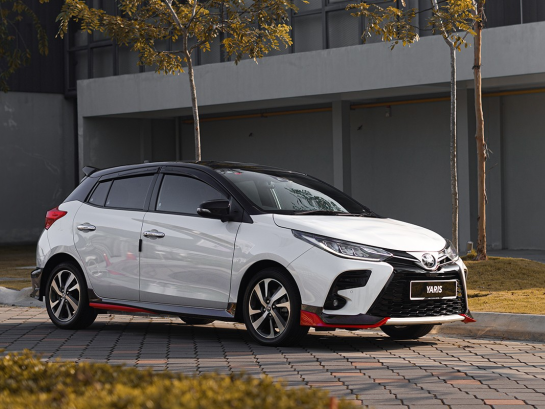
Toyota Yaris Interior Design Revealed: The Ideal Choice for Daily Commutes
AshleyJul 17, 2025
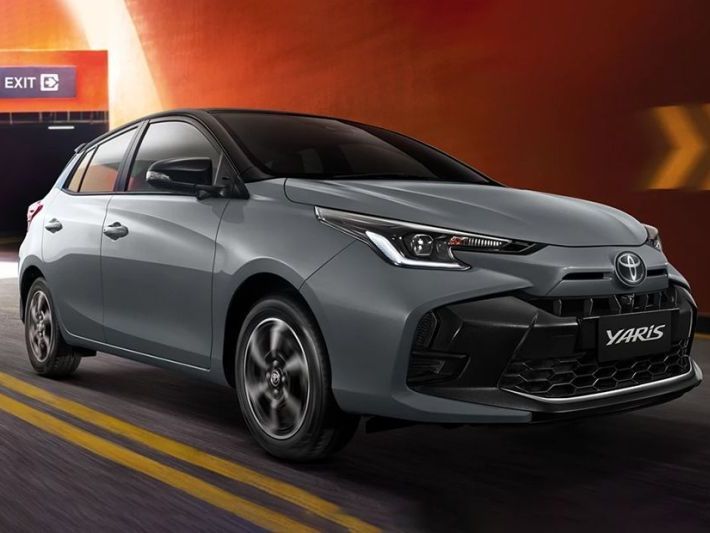
Highlights of the Toyota Yaris: The Perfect Fusion of Outstanding Power and Comfortable Handling
MichaelApr 16, 2025
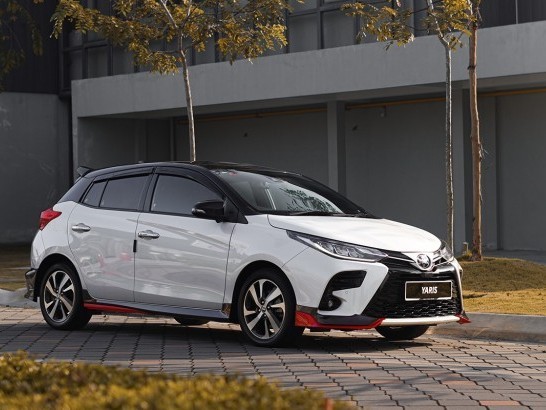
Is my Yaris fuel consumption normal? What should the fuel consumption per 100km be?
MichaelFeb 28, 2025

Toyota takes the crown at the second stop of the 2025 WRC, the GR Yaris helps Toyota take the top of the points table
JamesFeb 19, 2025

Starting from RM 88,000! The favorite of office workers, Toyota Yaris meets all your needs!
LienSep 4, 2024
View More



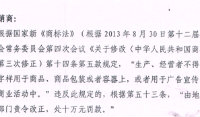








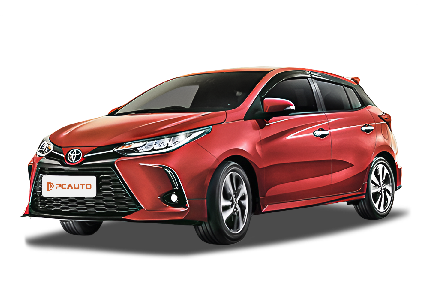




Pros
Cons